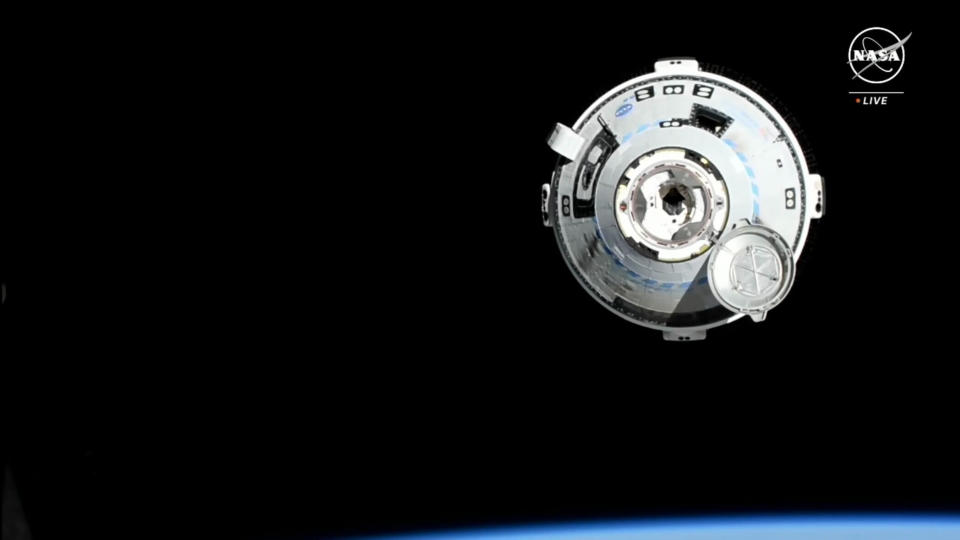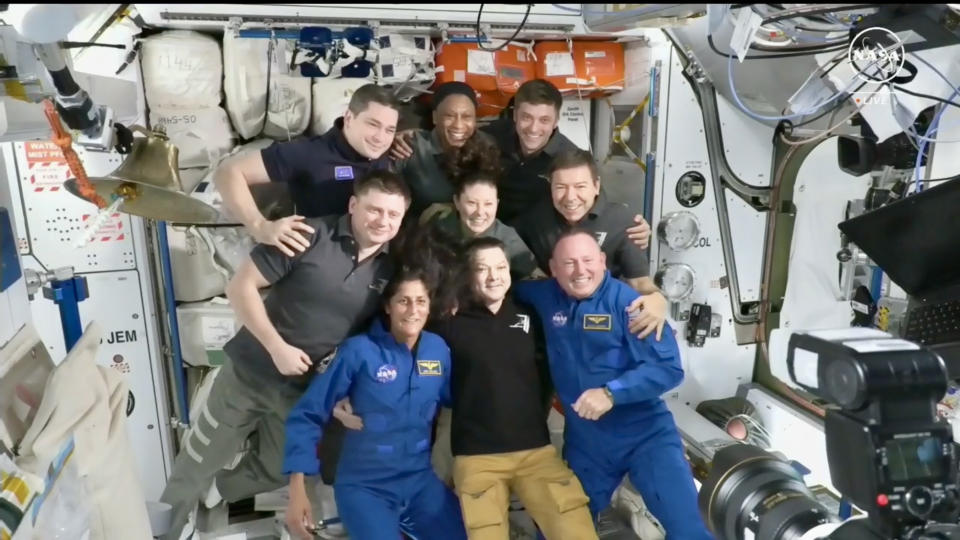When NASA astronauts attempted to dock Boeing’s first manned Starliner spacecraft at the International Space Station on Thursday (June 6), they had to wait.
Five stern thrusters on Starliner service module was out. And that was after flight controllers found workarounds for two new helium leaks on the spacecraft in addition to one that already existed. Additionally, its cooling system was using more water than expected, and another helium leak would be detected later, after the Starliner docked with the space station.
So what happens? Why all the glitches?
NASA and Boeing, in turn, are not worried. After all, Starliner’s mission to the ISS, Boeing’s Crew Flight Test, is – in both name and nature – a test flight. The mission is only the sixth in history in which NASA astronauts have flown for the first time in an all-new spacecraft. For Boeing finally arriving at the ISS with astronauts after its first uncrewed test flight failed to do this in 2019 only to have more problems delaying this manned flight marked a giant leap forward.
And these flaws? So far, NASA and Boeing have surpassed them.
The Starliner docked with the ISS just over an hour later than planned, after some manual flying by NASA astronauts Butch Wilmore (the mission commander) and Sunita Williams (its pilot) helped Boeing engineers recover four of the five rocket boosters. descent. The fifth will remain deactivated for the rest of the mission, but the failure — which may actually be in the Starliner software and not in the thrusters themselves — will not pose a risk to the return to Earth.
Related: First Boeing Starliner Astronaut Flight: Live Updates

The astronauts also refilled the water tank in their cooling system from an onboard supply, and future vehicles will carry a larger tank from the start, Boeing said. As for the helium leaks, Starliner has an ample supply of gas for the rest of the mission, but Boeing engineers still want to understand why they keep appearing.
“We have two problems on this vehicle right now, the helium leak and figuring out how to adjust these thrusters so they don’t shut down,” Boeing Starliner program manager Mark Nappi told reporters at a news conference Thursday night. “These are very small problems, actually, to deal with and we will resolve them before the next mission.”
NASA’s Steve Stich, who oversees the agency’s Commercial Crew Program, compared Boeing’s Starliner flight to the agency’s own first spacecraft mission, STS-1, which launched astronauts John Young and Bob Crippen into orbit in 1981.
“I would say some of the challenges we face are very similar to the space shuttle,” Stich said. The failure of the water cooling system, for example, is surprisingly similar to another NASA faced on transport flights throughout this 30-year program, he added.
Meanwhile, Wilmore and Williams have a packed week or so while on the space station, where they’ll test everything from how comfortable the Starliner is to sleep in and how well it can accommodate crews of four astronauts (its nominal complement) to how the capsule serves as a safe haven in case of an emergency at the station.
“Because they are scheduled to be there for a relatively short period of time, we work them much harder than we do with our ISS crews,” NASA’s Emily Nelson, chief flight director for the Starliner crew flight test, told reporters. reporters. “There are a lot of check-outs.”
Many of these tests are aimed at preparing the station and the Starliner program for Starliner 1, the first of at least six astronaut taxi flights for NASA by Boeing under its $4.2 billion Commercial Crew Program contract. That mission is expected to launch in early 2025. Boeing is one of two companies with multibillion-dollar contracts to transport NASA astronauts to and from the ISS. The other, EspaçoXhas already carried out eight missions for NASA in its Dragon Crew spacecraft.


RELATED STORIES:
— Meet the crew of Boeing’s first Starliner astronaut flight
– 2 astronaut taxis: Why NASA wants Boeing’s Starliner and SpaceX’s Dragon
– SpaceX congratulates Boeing, ULA on the first manned launch of Starliner
Nelson said ISS flight controllers can use cameras on the station’s robotic arm to inspect the affected thrusters on the Starliner, in case any problems can be detected that way. Because the boosters are in the Starliner service module, which is jettisoned before reentry, Boeing will not welcome it back to study on Earth.
Still, NASA and Boeing are confident that the thruster failure observed during docking will not pose a major threat. During Boeing’s second unmanned flight test, who actually arrived at the space station in 2022, several thrusters also went offline in the same way, Stich said.
“I don’t think we’re necessarily worried about all the boosters,” Stich said, adding that those affected on the 2022 flight performed well after being recovered. “These thrusters worked fine after we brought them back.”
For their part, Wilmore and Williams are eager to get to work testing the Starliner.
The astronauts received a warm welcome as they floated from the Starliner to the ISS, with the ringing of a ship’s bell, some light dancing and hugs from the station’s seven-person Expedition 71 crew, representing the United States and Russia. They have until at least June 14, if not a little longer, to complete their work, and they only have one day off during that time, NASA said.
“We are ready to work for international partners here,” Wilmore said. “Whatever you asked us to do. We’re ready.”






































